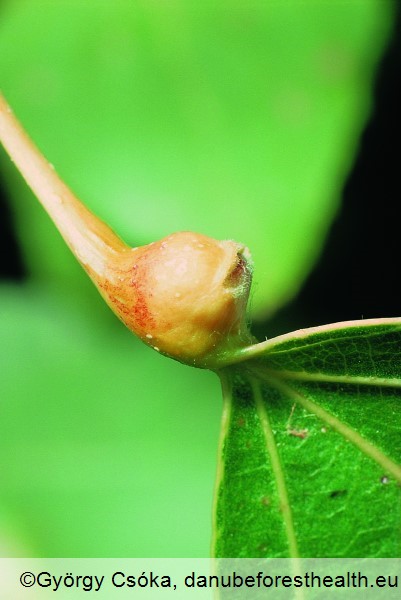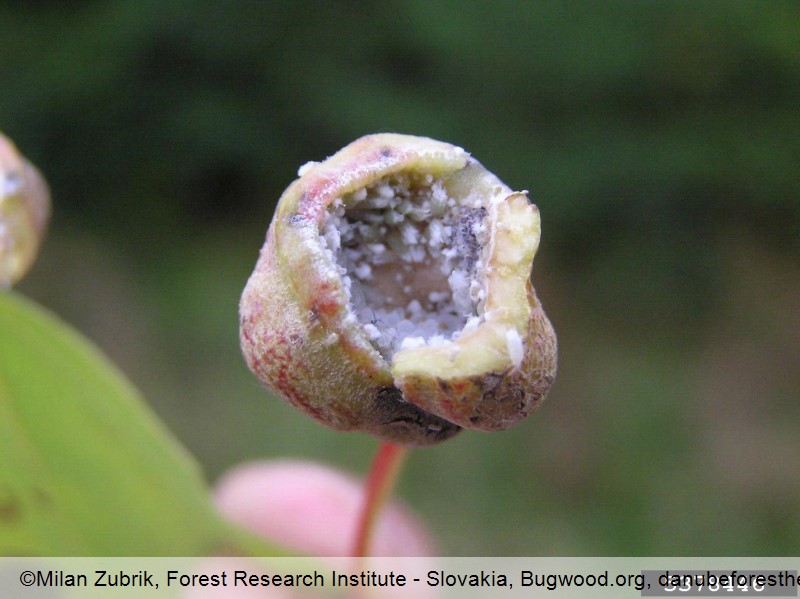Animalia
Gall forming aphids on poplars
Pemphigus spp.
Andreja Kavčič
|
|

Fig. 1. A gall caused by the poplar spiral gall aphid, Pemphigus spyrothecae

Fig. 2. A gall caused by the lettuce root aphid, Pemphigus bursarius

Fig. 3. Numerous poplar spiral gall aphids (females), Pemphigus spyrothecae, inside the gall
DETECTION PERIOD:
April to October
DESCRIPTION:
Adults are 1–2 mm long yellowish green or greyish green aphids. They have short antennae and lack abdominal tubules that are characteristic of other aphids. They are usually covered with a white, cotton-like mass that they secrete from wax glands. They live in numerous colonies inside galls, that they form on leaves, petioles or buds of their primary hosts, or freely on roots of their secondary hosts. Galls are formed by winged females that hatch from overwintered fertilized eggs in spring (April). They usually have a distinct species-specific form and colour. They are green or brown, with or without a red tinge, spherical, pouch-like or spongy. Their dimensions range from a few millimeters to a few centimeters. Only females live in galls. The development is complex, with generations of winged and non-winged, viviparous and egg-laying, asexual and sexual generations that migrate between the primary (winter) host and the secondary (summer) host. In the late spring, winged females leave the galls and migrate to their secondary host, where they live on roots. Here, males and females develop and mating occurs. In the autumn, fertilized females migrate to their primary hosts, where they lay eggs in bark cracks. In spring, winged viviparous females hatch from these eggs, which suck on the plant tissue and cause the formation of galls.
HABITAT:
Gall forming aphids of the genus Pemphigus can be found in natural habitats, nurseries, plantations and urban areas. Their main host is poplar (Populus spp.), their secondary hosts include biennial and perennial plants from the aster family (Asteraceae) and the parsley family (Apiaceae). Some species remain on the main host all year.
STATUS:
The Pemphigus gall-forming aphids are widespread in different parts of the world, some are cosmopolitan, others are restricted to a certain area. A few Pemphigous species are widespread in Europe, including the ReFOCUS area.
IMPACT:
The impact of gall forming aphids of the genus Pemphigus is generally very small. However, they can cause aesthetic damage when abundant, because the galled leaves fall prematurely.
SIMILAR SPECIES:
Different species of Pemphigus gall-forming aphids are morphologically very similar. They differ mainly in the location, size and shape of their galls.
|